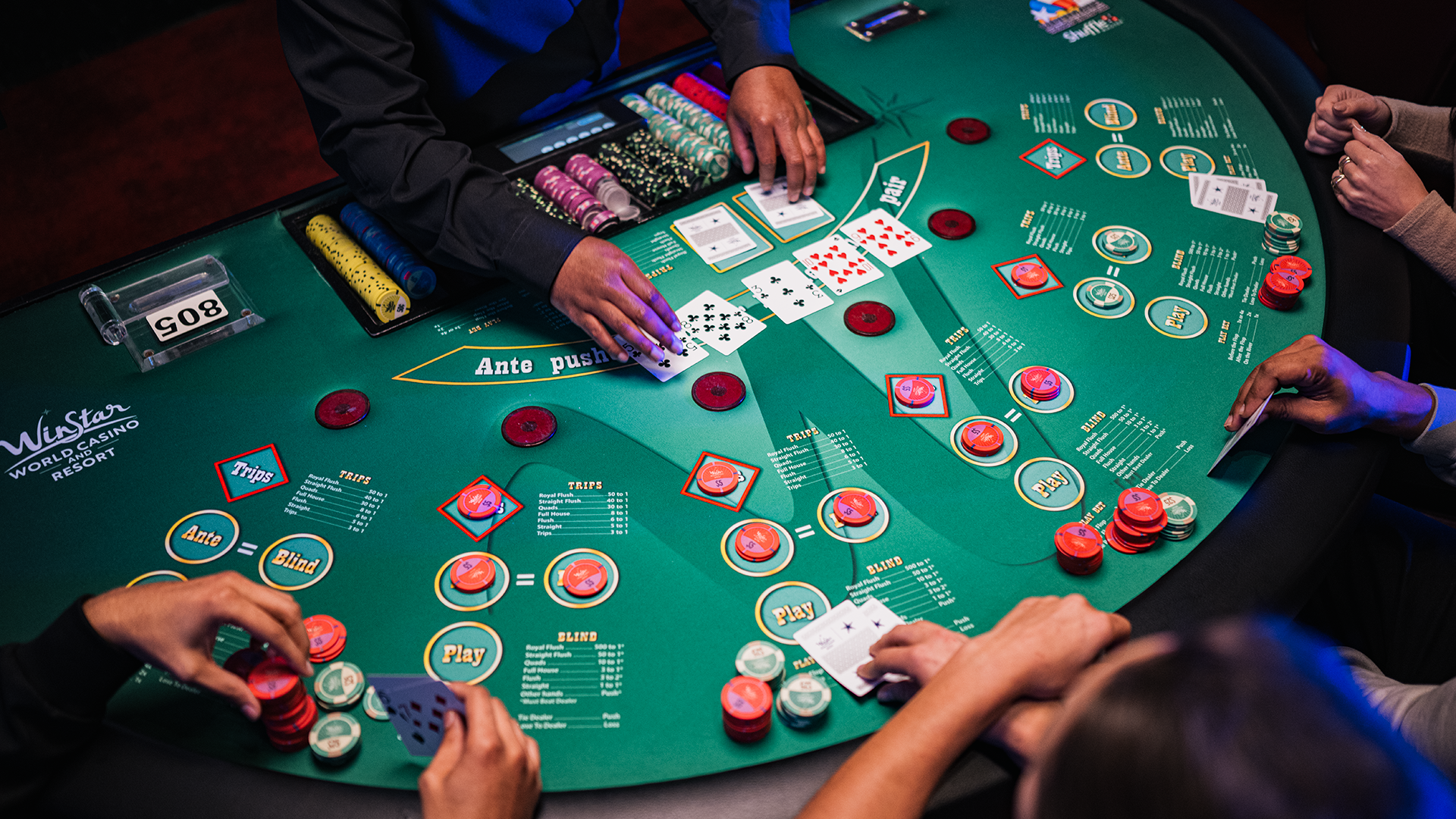From friendly games to high-stakes tournaments, Texas Hold ‘Em is one of the most popular variants of poker played worldwide. To excel at this dynamic game, it’s crucial to have the best strategy for Texas Hold ‘Em in place. In this article, we’ll explore some of the best ways to master the game and realize more wins.
Texas Hold ‘Em Strategy for Beginners
Starting Hands
One of the fundamentals of any Texas Hold ‘Em strategy is understanding which starting hands to play in Texas Hold ’Em and which to fold. Players should learn the ranking of these hands and develop a disciplined approach to playing the strongest hands, especially in early positions.
Position
Position is key in Texas Hold ‘Em. Players in later positions have the advantage of acting after their opponents, allowing them to make more informed decisions. Understanding how to use position to your advantage can significantly improve your win rate.
Betting Strategies for Texas Hold ’Em
Bet Sizing – Pre-Flop
When it comes to pre-flop betting in Texas Hold ‘Em, it’s essential to follow the standard practices at your table. Typically, the standard pre-flop raise is around 2.5 times the big blind (2.5xBB). As a beginner, sticking to this established sizing can help you avoid unnecessary complications and confusion.
Raising an odd or unconventional amount may seem strategic, but it often has the opposite effect. It can confuse opponents and make it harder for them to assess the strength of your hand. In many cases, it may result in loose calls that you’d prefer to avoid.
Consistency in bet sizing is key. Making your bets easy to understand and predict for your opponents can work in your favor, especially in the pre-flop stage where decisions are often based on the strength of starting hands rather than post-flop dynamics.
Bet Sizing – Post Flop Strategy Texas Hold ’Em
After the flop, bet sizing becomes even more important as players have more information about their hand and the potential strength of their opponents’ hands. Learning to size your bets appropriately based on the texture of the board and your opponents’ likely holdings is essential for success.
When it comes to post-flop betting, the continuation bet (c-bet) is a common Texas Hold ’Em strategy, especially if you were the pre-flop raiser. Here’s a guideline for sizing your c-bets effectively:
- C-Bet Sizing: If you initiated the action pre-flop and decide to make a continuation bet after the flop, it’s typically advisable to size your bet between 50% and 70% of the pot. This range helps convey strength to your opponents while also allowing you to extract value from your strong hands.
- Defining Hand Strength: The size of your c-bet plays a crucial role in defining the strength of your hand. A larger bet size often indicates a stronger hand to inexperienced players, potentially leading them to fold weaker holdings. Conversely, betting too small may invite opponents to call or even raise, putting you in a tough spot.
Example Scenario: For instance, suppose you’re in a 9-Max $1/$2 No Limit Hold’em cash game and raise with Pocket Jacks from UTG+1. The button calls, and the flop comes Ad-6h-2s. Despite the scare card (the Ace), you assess that the button would likely have 3-bet with a strong Ace, making it less likely they hold one. Betting too small could invite a raise from a savvy opponent representing the Ace, so you confidently bet 2/3 of the pot and successfully elicit a fold.
Consideration: It’s important to note that post-flop scenarios can vary greatly, and there’s no one-size-fits-all approach. Your opponent’s tendencies, the board texture, and your own hand strength should all inform your bet sizing decisions. Additionally, be cautious about committing too many chips to a pot with marginal hands, as over-betting can leave you pot-committed in unfavorable situations.
Proper bet sizing is essential for both maximizing value from strong hands and minimizing losses with weaker ones. Learning to vary your bet sizes based on the strength of your hand and the texture of the board is crucial for success.
Bet Sizing – Bluffs Tips for Texas Hold ’Em
When it comes to how to bluff in Texas Hold ‘Em, the size of your bet is a critical factor in making your opponents believe that you have a strong hand. While the instinct might be to go all-in to represent a big hand when bluffing, employing more nuanced bet sizing can often be more successful. Let’s dive into this with an example:
Imagine you’re playing in a No Limit Hold ‘Em tournament. It’s late in the event, and the blinds are high relative to the stack sizes. You’re on the button with a relatively weak hand, like 8♠️-7♠️. The action folds to you, and you decide to raise pre-flop, as you’ve noticed the players in the blinds have been folding a lot.
The small blind folds, but the big blind, who is a tight player, calls your raise. The flop comes J♦️-9♣️-2♠️, giving you an open-ended straight draw but still leaving you with a weak hand.
Here’s where the importance of bet sizing in bluffing comes into play:
Instead of making a large, obvious bluff with a big bet, you decide to make a continuation bet (c-bet) of about 40% of the pot. This sizing accomplishes a few things:
- Conveys Strength: While your actual hand is weak, the size of your bet suggests that you have a strong hand, possibly hitting a piece of the flop-like top pair or a strong draw. This can make your opponent hesitate to call, fearing that you have them beat.
- Manages Risk: By not committing a large portion of your stack to the bluff, you’re mitigating the risk of losing a significant amount if your bluff is called or raised.
- Preserves Options: If your bluff is unsuccessful and your opponent calls, you still have chips left to potentially continue the bluff on future streets or to fold if necessary.
In this scenario, your well-timed and well-sized bluff puts pressure on your opponent, who folds their hand, allowing you to win the pot without needing to show down your cards.
This example illustrates how strategic bet sizing can enhance the effectiveness of your bluffs in Texas hold’em, helping you navigate tricky situations and win pots even with weaker hands.
Bet Sizing – Value Betting Texas Hold ‘Em
When betting for value in Texas Hold ’Em, your goal is to extract the maximum amount of chips from your opponents when you believe you have the best hand. Effective bet sizing for value involves finding the right balance between making a bet large enough to maximize your winnings while still enticing your opponents to call with worse hands.
Example:
You’re playing in a cash game of No Limit Texas Hold ‘Em with blinds at $2/$5. You’re sitting in the middle position with AcKc, a premium starting hand. Pre-flop, you raise to $20, and only the player on the button calls.
The flop comes Kd-7s-2c, giving you top pair with top kicker, a strong hand. Now, your objective is to extract value from your opponent’s range of hands.
Here’s how you might approach bet sizing for value in this scenario:
- Assess the Board Texture: The flop is relatively dry with no obvious draws, making it less likely that your opponent has a strong hand.
- Consider Your Opponent’s Range: Since your opponent called your pre-flop raise from the button, their range could be quite wide, including weaker kings, middle pairs, or even draws.
- Determine Your Bet Size: You decide to make a continuation bet (c-bet) of $30 into the $45 pot, sizing it at approximately two-thirds of the pot. This bet size achieves a few objectives:
- It builds the pot, increasing the potential value of your hand.
- It puts pressure on hands like middle pairs or draws, making it less likely that they will continue without a strong holding.
- It keeps weaker hands, such as single overcards, in the pot, allowing you to extract more value on future streets.
- Adjust Based on Opponent’s Tendencies: If your opponent is known to call large bets with weak hands, you might opt for a slightly larger bet size to maximize value. Conversely, if your opponent is more likely to fold to aggression, a smaller bet size might be more appropriate to keep them in the hand.
Advanced Texas Hold ’Em Tips and Strategies
Reading Opponents
Being able to read your opponents’ tendencies and discern their likely holdings is a hallmark of a skilled poker player. Pay attention to betting patterns, body language, and other behavioral cues to gain insights into your opponents’ strategies. Here are some cues to look out for when reading an opponent.
1. Texas Hold ’Em Betting Patterns:
- Pay attention to how your opponents bet in different situations. Do they tend to bet aggressively with strong hands and passively with weak ones, or vice versa?
- Take note of any deviations from their usual patterns, as these can sometimes indicate strength or weakness.
- Consider factors such as the size of their bets, the timing of their bets, and their frequency of betting or raising.
2. Body Language and Behavioral Cues in Texas Hold ’Em:
- Observing your opponents’ body language can provide valuable insights into the strength of their hands.
- Look for signs of nervousness, confidence, hesitation, or excitement, which can sometimes betray the strength or weakness of their holdings.
- Watch for subtle movements like eye contact, fidgeting, or changes in posture that may indicate discomfort or deception.
3. Timing Tells:
- The timing of your opponents’ actions, such as how quickly they make decisions or whether they take longer than usual to act, can also offer clues about the strength of their hands.
- A quick call or raise may suggest strength, while a lengthy pause followed by a bet could indicate uncertainty or weakness.
- Conversely, some players may intentionally use timing tells to deceive their opponents, so be cautious and consider the context of the situation.
4. Betting and Hand History:
- Consider the betting and hand history with specific opponents. Have they shown a tendency to bluff in certain situations or to play aggressively with marginal hands?
- Use past interactions and observations to inform your decisions and adapt your strategy accordingly.
- Keep track of showdowns and note the types of hands your opponents showdown, as this can help you better understand their ranges and tendencies.
5. Context and Adaptation:
- Remember that reading opponents is not an exact science and requires constant adaptation and interpretation based on the specific dynamics of the game.
- Consider the context of the current hand, table dynamics, and your opponents’ playing styles when making reads.
- Be open to adjusting your assessment of opponents as new information becomes available or as the game evolves.
Bluffing in Texas Hold ’Em
Bluffing is a risky but essential component of Texas Hold ‘Em strategy. Knowing when and how to bluff effectively can help you win pots even when you don’t have the best hand. However, bluff sparingly and selectively, as over-bluffing can be costly.
Pot Odds and Implied Odds
Understanding pot odds and implied odds is critical for making informed decisions about whether to call, raise, or fold. By calculating the odds of completing your drawing hand compared to the size of the pot, you can make mathematically sound decisions that maximize your expected value.
Knowing When to Fold in Texas Hold ‘Em
Understanding when to fold is a pivotal aspect of a successful Texas Hold ’Em strategy that is often overlooked, particularly among amateur players. A fundamental principle in playing poker is that preserving your chips through timely folds is just as important as winning pots with strong hands.
The significance of folding cannot be overstated in maintaining a healthy bankroll. Many inexperienced players struggle because they fail to recognize situations where folding is the most prudent decision.
Consider a scenario in a $1/$2 cash game where a player is dealt A-6 off suit in the small blind. With an early position limper and a raise from the cutoff, our player faces a difficult decision. While having an Ace may seem enticing, the potential risks of playing this hand out of position in a potentially multi-way pot outweigh the benefits. Recognizing this, our player wisely chooses to fold, thus avoiding a costly 2BB call.
In this example, the act of folding saves our player from potential losses. If this decision is repeated over multiple hands, the accumulated savings could be substantial.
Conversely, had our player chosen to call with the weak hand and subsequently lost, the consequences could have been dire.
By making disciplined folds, our player can preserve their stack for more favorable opportunities. Conversely, failing to fold in situations where it is warranted can lead to significant losses. Whether it’s being out-kicked by a stronger Ace or dominated by an overpair, improper folding can prove detrimental to one’s success at the poker table.
Importance of Adaptability
Flexibility is key in Texas Hold ‘Em. No strategy works in every situation, so it’s essential to adapt your approach based on factors such as table dynamics, opponents’ playing styles, and the stage of the tournament.
In the dynamic game of Texas Hold ‘Em, adaptability stands as a cornerstone of success. Recognizing that no single strategy can encompass every scenario, skilled players understand the necessity of fluidity in their approach.
Table dynamics, opponents’ playing styles, and the evolving nature of the tournament all demand constant assessment and adjustment. As the game progresses, being able to pivot strategies seamlessly in response to changing conditions becomes paramount.
Whether facing aggressive opponents, passive players, or navigating through different stages of the tournament, the ability to adapt ensures that one remains competitive and capable of capitalizing on opportunities as they arise.
Bankroll Management
Managing your bankroll effectively is a fundamental aspect of achieving long-term success in poker. It involves carefully controlling the amount of money you allocate for playing poker and making strategic decisions to ensure that your bankroll can withstand the inevitable swings and variance of the game.
1. Dedicated Texas Hold ’Em Bankroll:
- Establishing a dedicated poker bankroll separate from your other finances is essential. This ensures that your funds are specifically allocated for playing the game and are not intertwined with your personal expenses or savings.
- By maintaining a separate bankroll, you can track your poker expenses accurately and make informed decisions about your play without risking your financial stability.
2. Avoiding Chasing Losses:
- One of the biggest mistakes Texas Hold ’Em players make is chasing losses by playing at higher stakes or increasing their buy-ins in an attempt to recover previous losses quickly.
- Instead of chasing losses, it’s essential to maintain discipline and stick to your bankroll management plan. Accept that losses are a natural part of the game and focus on making sound decisions to protect your bankroll in the long run.
3. Staying Within Your Comfort Zone:
- Play at stakes that are within your comfort zone and skill level. Avoid the temptation to play at higher stakes simply because you’ve experienced a run of good luck or because you want to impress others.
- Playing at stakes that match your skill level ensures that you have a better chance of making profitable decisions and mitigates the risk of losing your bankroll to more experienced players.
4. Continuous Evaluation and Adjustment:
- Bankroll management is not a one-time task but rather an ongoing process that requires continuous evaluation and adjustment.
- Regularly review your bankroll status, win rates, and performance to determine if any changes need to be made to your strategy or playing habits. Adjust your bankroll requirements accordingly as your skill level and financial situation evolve.
Continuous Learning and Improvement
Texas Hold ’Em is a game of skill that rewards continuous learning and improvement. Stay updated on the latest strategies and developments in the poker world through books, online forums, and coaching. Analyze your own play regularly to identify areas for improvement and strive to become a better player over time.
Take your Texas Hold ’Em Strategy to WinStar
Mastering Texas Hold ‘Em requires a combination of strategic thinking, psychological insight, and mathematical calculation. By understanding the fundamentals of the game, honing your skills through practice, and remaining adaptable in your approach, you can increase your chances of success on the felt. With these core strategies in your pocket you could be ready to hit Texas Hold ’Em tables at WinStar. Come on down and put your skills to the test!
FAQs
What is the best starting hand in Texas Hold ‘Em?
- The best starting hand in Texas Hold ‘Em is pocket aces (two aces as your hole cards), followed by pocket kings and pocket queens.
How do I improve my Texas Hold ’Em skills?
- Improving your Texas Hold ’Em skills requires studying strategy, practicing regularly, and analyzing your play to identify areas for improvement. Consider seeking out coaching or joining a study group to accelerate your progress.
How important is position in Texas Hold ‘Em?
- Position is crucial in Texas Hold ‘Em, as players in later positions have the advantage of acting after their opponents. This allows them to make more informed decisions based on the actions of other players.
Should I bluff in Texas Hold ‘Em?
- Bluffing is a valuable tool in poker, but it should be used judiciously and based on the specific dynamics of the hand and the table. Avoid bluffing too frequently or in situations where it’s unlikely to succeed.
What is the role of bankroll management in poker?
- Bankroll management is essential for poker players to ensure they don’t risk too much at once. . It involves setting aside a dedicated bankroll for poker, determining appropriate stakes to play at, and avoiding going on tilt after losses.






















